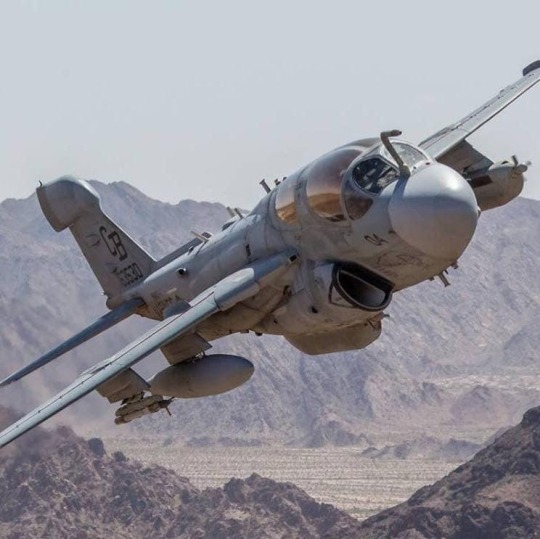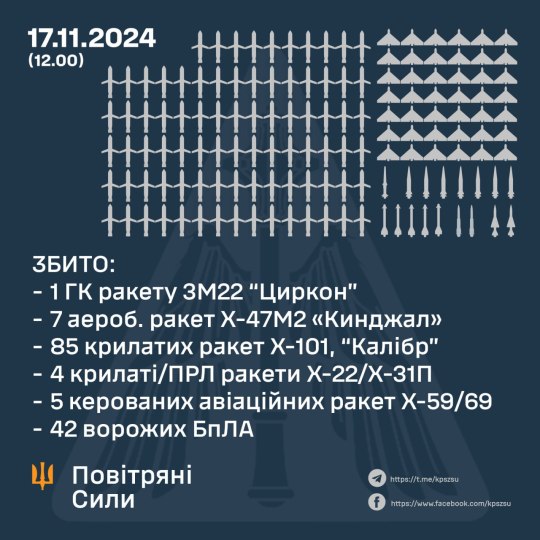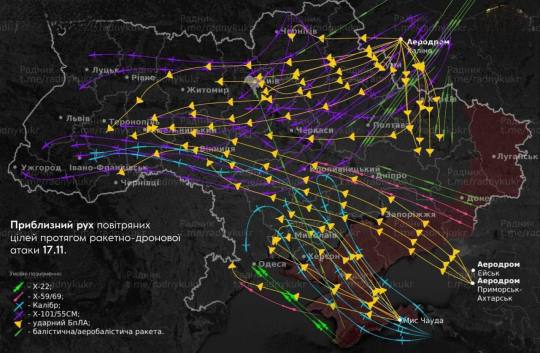#electronic-warfare aircraft
Explore tagged Tumblr posts
Text

"Prowler in the Canyon"
#Northrop#Grumman#EA-6#Prowler#EA-6B#electronic-warfare aircraft#Low level#flying#Star Wars Canyon#Jedi Transition#Military aircraft#airplane#plane
171 notes
·
View notes
Text
EA-6B Prowler of VAQ-140 'Patriots' assigned to CVW-3 'AC' aboard CV-67 USS John F. Kennedy in 1986, with other air wing aircraft behind (air wing units listed below)

CVW-3 August 18, 1986 - March 2, 1987 (Mediterranean Sea) aboard USS John F. Kennedy (CV 67)
Fighter Squadron 14 (VF-14) ‘Tophatters’ - F-14A Tomcat
Fighter Squadron 32 (VF-32) ‘Swordsmen’ - F-14A Tomcat
Attack Squadron 66 (VA-66) ‘Waldos’ - A-7E Corsair II
Attack Squadron 75 (VA-75) ‘Sunday Punchers’ - A-6E & KA-6D Intruder
Marine All-Weather Attack Squadron 533 (VMA(AW)-533 ‘Hawks’ - A-6E Intruder
Carrier Airborne Early Warning Squadron 126 (VAW-126) ‘Seahawks’ - E-2C Hawkeye
Tactical Electronic Warfare Squadron 140 (VAQ-140) ‘Patriots’ - EA-6B Prowler
Helicopter Anti-Submarine Squadron 7 (HS-7) ‘Dusty Dogs’ - SH-3H Sea King
Carrier Air Anti-Submarine Squadron 22 (VS-22) ‘Checkmates’ - S-3A Viking
Fleet Air Reconnaissance Squadron 2 (VQ-2) ‘Batmen’ - EA-3B Skywarrior
#ea-6b prowler#prowler#grumman#electronic warfare#us navy#usn#naval aviation#CV-67#uss john f kennedy#aircraft carrier#aviation military pics#military aircraft#military aviation
93 notes
·
View notes
Text

EA-6B Prowler
@violetpilot1 via X
#ea-6b prowler#grumman aviation#electronic warfare#aircraft#navy#aviation#us navy#carrier aviation#cold war aircraft
34 notes
·
View notes
Text

Two Douglas EA-3B Skywarriors from Fleet Air Reconnaissance Squadron 2 (VQ-2) fly past Gibraltar.
Photographed by PH3 Franklin P. Call, USN., on June 20, 1991.
National Museum of the U.S. Navy: 330-CFD-DN-SC-92-01461
#Douglas A-3 Skywarrior#Douglas A-3#A-3 Skywarrior#A-3#Skywarrior#Douglas#EA-3B#Attack Aircraft#Strategic Bomber#A3D-2Q#Electronic Warfare Aircraft#Aircraft#Fleet Air Reconnaissance Squadron 2#VQ-2#United States Navy#U.S. Navy#US Navy#USN#Navy#Gibraltar#June#1991#my post
43 notes
·
View notes
Text
what if we kissed in the back seats of an EA-6B Prowler carrier-based airborne electronic warfare system while suppressing enemy air defenses
10 notes
·
View notes
Text
The Assessment of Emerging Technologies Impacting ISR in U.S. is estimated to reach $1,430.0 Million by 2037 from $430.7 Million in 2027, at a CAGR of 12.75% during the forecast period 2027-2037.
#Assessment of Emerging Technologies Impacting ISR in U.S.#Deep Sensing Technologies#AI-Based Cognitive Electronic Warfare System#Hypersonic Aircraft#Defence and Security#BISResearch
0 notes
Text
Jet drones spotted over Belgorod region of Russia - Technology Org
New Post has been published on https://thedigitalinsider.com/jet-drones-spotted-over-belgorod-region-of-russia-technology-org/
Jet drones spotted over Belgorod region of Russia - Technology Org
A jet drone was spotted over the Belgorod region of Russia. Local Russians are getting used to constant drone attacks and the hopelessness of their own air defences, but they haven’t seen jet drones before. They will now have to get used to them too.
A jet drone somewhere in the skies over Belgorod region of Russia. (Screenshot)
Jet drones circling over the Belgorod region were filmed by local residents. There is almost no doubt that these are kamikaze drones, but it was not reported whether they destroyed anything. It is also not reported whether they were shot down or taken down using some electronic warfare tools. But there are already guesses as to what these aircraft could have been.
[embedded content]
In May of last year, it was reported that the United Kingdom had handed over Banshee jet drones to Ukraine. In February of this year, Russian invaders found the wreckage of a similar drone in the occupied part of the Donetsk region. It is believed that the defenders of Ukraine are using British drones for attacks on important targets or have copied the Banshee design and are now producing something similar themselves.
Interestingly, the Banshee was developed back in the 1980s, but had a pusher propeller configuration back then. The Royal Navy only crammed two jet engines into the Banshee’s tail in 2021. This is how the Banshee Jet 80+ was created, which has endurance for 45 minutes and a range of just over 100 km.
The Banshee will certainly not be the longest-range drone in the Ukrainian arsenal, but it has a speed of 720 km/h and goes up to an altitude of 9 km, so it is not the easiest thing to shoot down. It should be remembered that Iran has also developed a jet version of the Shahed-136 drone. Despite the fact that jet drones are more expensive, they are harder to shoot down with the cheapest means, unlike the slow propeller drones.
Banshee drones are used all over the world. Over the years over 8,000 of them were manufactured, mostly with propeller engines. But here’s an interesting detail: Banshee was not designed for the tasks that the Ukrainians are using it for.
The Banshee was originally designed as a target drone for air defence systems. It is used in exercises to test the readiness of soldiers and equipment to counter various threats from the air. The Banshee Jet 80+ was designed for the same task. But the defenders of Ukraine, unfortunately, have no shortage of aerial targets, so they install 7 kg of explosives on the Banshee and send these drones at Russian targets like smaller and slower cruise missiles.
Ukraine received a limited number of Banshee drones. However, these precise tools will certainly do their part in attacking crucial targets in Russia. Lately those have been various objects in the Russian oil industry.
Written by Povilas M.
Sources: NOELReports Twitter, Wikipedia
#000#1980s#air#air defence#aircraft#Authored post#Banshee jet drone#cruise missiles#defenders#Design#drone#drones#electronic#electronic warfare#engines#equipment#explosives#Featured Military news#how#Industry#Iran#it#jet engines#kamikaze drones#military drones#Military technology#missiles#Navy#objects#oil
0 notes
Text
#us news#electronic warfare aircraft market#electronic warfare aircraft market report#electronic warfare aircraft market size#electronic warfare aircraft market trends#electronic warfare aircraft market analysis#electronic warfare aircraft market forecast#electronic warfare aircraft market growth#aerospace and defense market#aviation and defense market#defense markets#defense market reports
0 notes
Text

The F-15EX is a modernized variant of the F-15 Eagle fighter jet, upgraded with advanced avionics and capabilities. It offers improved air-to-air combat and air-to-ground strike capabilities compared to earlier F-15 models. Key features include:
Upgraded avionics with a new glass cockpit, improved radar, and advanced communication systems
Improved radar system (APG-82) for air-to-air and air-to-ground capabilities
Enhanced air-to-air combat capabilities with increased range and accuracy, and improved maneuverability
Ability to deliver accurate and precise strikes against ground targets with advanced precision-guided munitions (JDAM)
Longer range due to advanced engines and improved fuel efficiency
Improved maneuverability, including roll rate and sustained turn rates
Advanced electronic warfare capabilities, including detection and jamming of enemy radar systems
Advanced communication systems for communication with other aircraft and ground stations
Overall, the F-15EX is a highly capable fighter jet, but it is an older design compared to newer fighter jets like the F-22 Raptor or F-35 Lightning II, which may have superior stealth capabilities and advanced sensor systems
127 notes
·
View notes
Text
Ukrainians are making good use of those F-16s. A Ukrainian pilot flying one set a new record for shooting down cruise missiles.
For the first time in the history of the F-16 Fighting Falcon, a Ukrainian-operated jet shot down six Russian cruise missiles during a single mission in December, including two with the aircraft cannon, the Air Force claimed on Jan. 7. The interception reportedly took place during a mass Russian aerial strike on the morning of Dec. 13, 2024, which saw Russia deploy almost 200 drones and 94 missiles. "For the first time in the history of the Fighting Falcon, an F-16 fighter jet destroyed six Russian cruise missiles in one combat mission," the Air Force Command said on social media. Ukraine has received a number of U.S.-made F-16 fighter jets from the Netherlands and Denmark, deploying them multiple times in air defense roles during Russian mass strikes on cities and infrastructure. "They say that even Americans couldn't believe you did it," Air Force Command spokesperson Yurii Ihnat said in an interview with the pilot, whose identity was not revealed.
While F-16s are not practical for shooting down smaller drones, Ukraine has displayed skill at neutralizing larger missiles launched by Russia.
Real life in Ukraine makes Top Gun seem lame.
The aviator said that he approached a group of cruise missiles and, despite their electronic warfare countermeasures, managed to lock on to targets. The F-16 reportedly shot down one pair of Russian projectiles with medium-range missiles and then another pair with short-range missiles. Ukrainian F-16s are equipped with four air-to-air medium-range and short-range missiles. Without missiles and low on fuel, the pilot was then recalled from the area but spotted another missile heading toward Kyiv. He moved to intercept it and opened fire from his aircraft cannon against the projectile, which was flying over 650 kilometers per hour, a difficult and risky maneuver, the Air Force said. "A few bursts from the cannon — and an explosion... then another one! 'A secondary detonation,' I thought, but, as it turned out, there were two missiles," the pilot said, adding he did everything as taught by U.S. instructors. According to the Air Force Command, Ukrainian pilots have learned how to shoot down missiles with aircraft cannons in simulators in the U.S. but have never attempted it during actual combat before.
When a malicious dictator is trying to erase your country, you have incentive to get things right the first time.
#invasion of ukraine#f-16#cruise missiles#new record for shooting down missiles#air defense#air command of the armed forces of ukraine#zsu#yurii ihnat#russian bombing of civilian targets#vladimir putin#владимир путин#добей путина#путин хуйло#агрессивная война россии#путлер#руки прочь от украины!#геть з україни#вторгнення оркостану в україну#командування повітряних сил зсу#юрій ігнат#деокупація#збройні сили україни#зсу#йдемо на ви#слава україні!#героям слава!
59 notes
·
View notes
Text

EF-111A Raven Electronic Warfare Aircraft
214 notes
·
View notes
Text

US Navy Prowler touching down at NAF El Centro
#USN#Navy#Grumman#EA-6#EA-6B#electronic-warfare aircraft#Military aviation#aircraft#aviation photography#El Centro#jet
81 notes
·
View notes
Text

EA-6B Prowler of VAW-140 'Patriots' assigned to CVW-7 'AG' aboard CVN-69 USS Dwight D. Eisenhower in CAG colors, 2006
22 notes
·
View notes
Text

An EA-6B Prowler and a C-2A Greyhound assigned to the RAWHIDES (chad r. erdmann) U.S. Navy
@kadonkey via X
#ea6b prowler#grumman aviation#electronic warfare#c2 Greyhound#transport#aircraft#navy#aviation#us navy#carrier aviation#cold war aircraft
50 notes
·
View notes
Text
🇹🇷🔥 Turkish Air Force - F-4E 2020 Terminator
The F-4E 2020 Terminator represents a significant leap forward in the capabilities of the Turkish Air Force. This comprehensive upgrade enhances the venerable F-4E Phantom II with modern Turkish-made weapons systems, showcasing Türkiye’s commitment to self-reliance and advanced military technology.
Background
With a storied history dating back to the 1960s, the F-4E Phantom II has been a pivotal player on the global stage of air combat. Serving multiple nations and seeing numerous conflicts, the Phantom carved out its place in aviation history as a versatile and rugged aircraft. Türkiye’s decision to upgrade this aircraft stems from a strategic imperative to leverage existing assets while infusing them with cutting-edge technology to maintain relevance in modern aerial warfare. The 2020 Terminator program is the Turkish Air Force’s ambitious initiative to retrofit these fighters with state-of-the-art systems.
Strategic Importance
The ability to exert air superiority and conduct precision strikes is paramount in a region marked by dynamic security challenges. The F-4E 2020 Terminator’s enhanced capabilities contribute significantly to deterrence, and the demonstration of Türkiye’s advancing aerospace industry serves both a strategic and diplomatic purpose.
Upgrade Overview
The 2020 Terminator upgrade, realized by Turkish Aerospace Industries in collaboration with ASELSAN, constitutes a multifaceted improvement over the aircraft’s original design. It touches every aspect of the aircraft’s systems, bringing its avionics, armaments, and electronic warfare systems into the 21st century.
Avionics:
The modernized multi-mode pulse Doppler radar extends the aircraft’s detection range, allowing it to lock onto and engage targets from greater distances. Integrating a Hands-On Throttle-And-Stick (HOTAS) system enhances pilot control, minimizing response time during high-stakes manoeuvres. Color Multifunctional Displays (MFDs) replace outdated gauges, providing pilots with real-time data visualization for improved situational awareness.
Armament:
The Terminator’s weapons suite has been revolutionized with a mixture of Western and indigenous munitions. Long-standing armaments like the AIM-9X Sidewinder are joined by Türkiye’s own precision-guided munitions, such as the SOM cruise missile, capable of striking strategic land and sea targets with formidable accuracy. The UAV-230, a domestic innovation, represents the pinnacle of Türkiye’s missile development, offering supersonic ballistic delivery of a range of warhead types over substantial distances. The BOZOK, MAM-C, MAM-L, and Cirit missiles exemplify Türkiye’s expertise in laser guidance and smart munition technology, enabling the Terminator to engage and defeat a broad spectrum of target profiles with unerring precision.
Electronic Warfare:
To contend with the contemporary battlefield’s electronic warfare environment, the F-4E 2020 Terminator incorporates an advanced Electronic Support Measures (ESM) system for rapid threat identification and an Electronic Countermeasures (ECM) suite to confound hostile tracking systems. Moreover, chaff and flare dispensers have been integrated to provide decoys against incoming missile threats, enhancing the aircraft’s survivability in hostile airspace.
Operational Capability:
The F-4E Phantom II, transformed by these integrated systems, emerges as a multirole platform capable of dominating beyond-visual-range air-to-air engagements and precision ground-attack missions. It can operate in complex electronic warfare environments and deliver various ordnances based on mission requirements, making it a flexible asset in the Türkiye Air Force’s inventory.
Significance:
The F-4E 2020 Terminator project is a hallmark of Türkiye’s aerospace ambition and its push toward defence autonomy. By retrofitting and modernizing its Phantoms, Türkiye maximizes the value of its existing fleet while also establishing a foundation for future indigenous aircraft development projects.
Munitions Details:
The advanced, indigenous Turkish weaponry integrated into the F-4E 2020 Terminator underlines a significant shift toward self-reliance in defence technologies. Each munition type brings unique capabilities that enhance the platform’s lethality:
UAV-230: A domestically-developed ballistic missile, this supersonic weapon delivers high-precision strikes at long ranges, challenging enemy defences with its speed and reduced radar cross-section.
BOZOK: The versatility of this laser-guided munition makes it ideal for engaging both stationary and moving targets with high precision, ideal for close air support.
MAM-C/L: These smart micro munitions are designed for tactical flexibility, allowing for precision targeting in complex engagement scenarios, from anti-armour operations to counter-insurgency roles.
Cirit: A highly accurate laser-guided missile system designed for low collateral damage, Cirit is adept at striking soft and lightly armoured targets with pinpoint accuracy.
SAGE Munitions: TUBITAK SAGE, Türkiye’s leading defence research and development institute, has contributed a range of munitions enhancing the Terminator’s operational capabilities across various domains.
Conclusion:
The upgraded F-4E 2020 Terminator is a testament to Türkiye’s determination to retain a competitive edge in aerospace and defence technologies. The integration of modern avionics, armaments, and electronic warfare capabilities ensures the aircraft’s continued relevance in modern air combat, and its presence in the skies serves as a deterrent in a strategically complex region.
#turkish army#turkish armed forces#turkish air force#turkishnavy#turkish navy#turkish#military#aircraft#air force#fighter jet#aviation#fighter plane#plane#airplane#military aviation#military aircraft#f 4 phantom ii#f 4 phantom#f 4e
127 notes
·
View notes
Text
мразоти.
одна ніч. 23 літака. 120 ракет. 90 шахедів.


On the night of November 17, 2024, the ruzzian occupiers carried out a massive combined attack on the energy sector facilities of Ukraine with various types of air-, land-, and sea-based missiles, as well as Shahed-type attack UAVs.
In total, according to preliminary data, the radio engineering troops of the Air Force of Ukraine detected and tracked 210 enemy air targets - 120 missiles and 90 UAVs.
By type:
- 1 hypersonic ship missile 3M22 "Zircon";
- 8 X-47M2 "Kinzhal" air-to-ground missiles;
- 101 cruise missiles X-101, "Kalibr";
- 1 Iskander-M ballistic missile;
- 4 X-22/X-31P cruise/anti-radar missiles;
- 5 X-59/X-69 guided missiles;
- 90 attack UAVs/drones of unspecified type.
The enemy used:
- 7 Tu-160 and 16 Tu-95MS strategic bombers;
- 2 Tu-22M3 long-range bombers;
- 5 Su-34 fighter-bombers;
- 4 Su-27 fighters;
- 10 MiG-31K fighters;
- 4 cruise missile carriers in the air attack.
Throughout the night, all available air defense forces and means were deployed along the route of the missiles and drones. Aviation, anti-aircraft missile units, electronic warfare assets, and mobile fire groups of the Ukrainian Air Force and Defense Forces were involved.
According to preliminary data, as of 12.00, 144 air targets were shot down - 102 missiles and 42 UAVs).
As a result of active counteraction by the Defense Forces, 41 enemy UAVs were lost in different regions of Ukraine, and two more UAVs flew towards Russia and the temporarily occupied territory.
Air defense was active in almost all regions of Ukraine - Kyiv, Cherkasy, Kirovohrad, Chernihiv, Sumy, Kharkiv, Poltava, Odesa, Mykolaiv, Zaporizhzhia, Dnipro, Zhytomyr, Vinnytsia, Khmelnytskyi, Ternopil, Ivano-Frankivsk, Rivne, Volyn and Lviv regions.
#ukraine#war in ukraine#russia is a terrorist state#stand with ukraine#russian aggression#17.11.2024#mine
48 notes
·
View notes